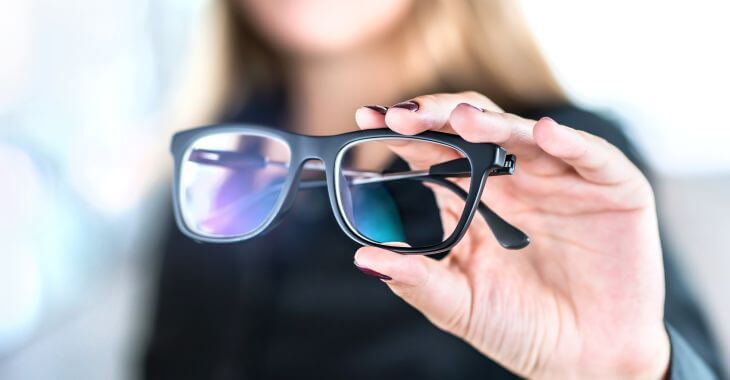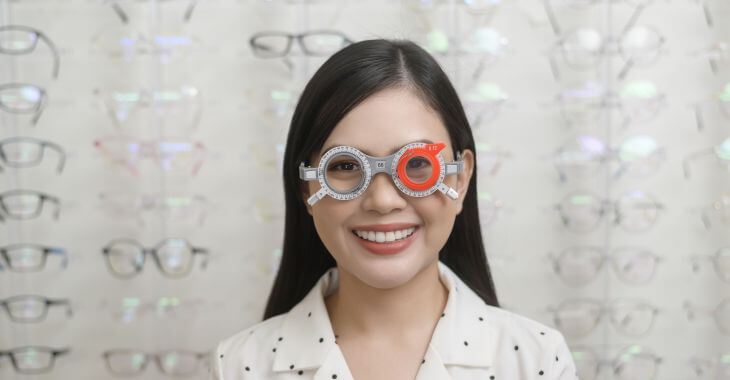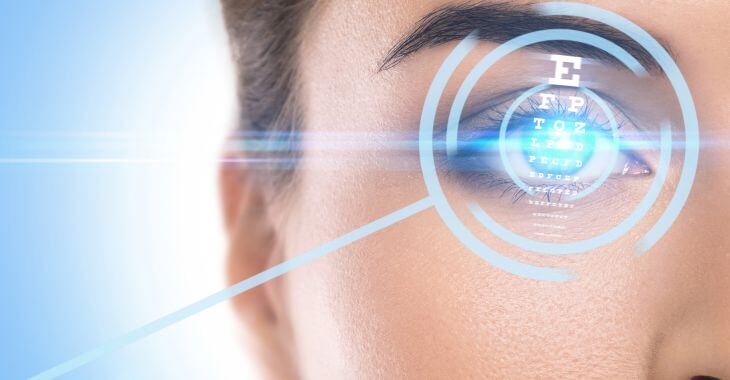What Are Bifocal Glasses?

If you need glasses to correct your vision, you are either nearsighted, farsighted or both. For those that have trouble seeing both near and far may require specialized glasses called bifocals. What are bifocal glasses and what are bifocals used for? Let’s take a look at who can benefit from these devices.
Simply put, bifocals are glasses with two lenses in one pair of glasses. The top half of the lens has a window to see far away, while the bottom is for reading or seeing close to you. This can benefit people with certain vision disorders that have trouble seeing near and far away.
When Are Bifocals Used?
While most people with vision problems fall into either near or farsightedness, this can change over time. It is very common for age to affect vision, especially when viewing smaller print and items near to you.
The most common people who need bifocals are older adults who have traditionally been nearsighted, but notice they can no longer see up close when wearing their glasses. While they can take off their glasses and use reading glasses to see, they can no longer see far away.
Bifocals are used to give people both near and far sight in one device. Benjamin Franklin first invented the bifocals around 1770 to eliminate the need for two different types of glasses. Over the centuries, these glasses have evolved and now millions of people use this vision technology.
Who Needs Bifocal Glasses?
As previously discussed, older adults with an existing vision problem are the most likely to need bifocal glasses. After the age of forty, most people experience presbyopia, which is an aging sight condition. While some people can use reading glasses alone, others may need bifocals for complete vision.
There are some younger people that also can benefit from wearing bifocal glasses. Accommodative dysfunction and estropia are conditions that affect both near and farsightedness. Bifocals can alleviate these conditions and provide better vision for these individuals.
Types of Bifocals
There are many different types of bifocal lenses and manufacturing processes. The three main types of traditional bifocal glasses include cemented, solid and fused. All these types have been used for over 100 years and come in a variety of segment options.
While there are advantages and disadvantages to all the different types of traditional bifocals, they all offer two lenses in one. They all provide vision close and far away, but they also have the same disadvantages, which include:
- A clear and visible line between the different lenses
- It can take time to adjust to using bifocals
- These lenses can be difficult for those who need intermediate focus for their job or hobbies
- The image can change when switching focus from one lens to another
As with most devices, there have been wonderful improvements with added technology. There are now options for digital or progressive bifocal glasses that can eliminate some of the disadvantages of traditional bifocals.
Benefits of Progressive Bifocals
Digital technology for creating progressive bifocal glasses has created progressive lens that can offer many benefits. The lenses are not ground like traditional glasses, but created by a laser that can produce precise and accurate results. For bifocals, this translates to incredible benefits, including:
- No visible horizontal line. Progressive lenses have no visible line, which can enhance the cosmetics of the glasses. Bifocals are linked with aging, so progressive lenses provide a more youthful appearance.
- Image does not jump. When changing vision, there is not a hard switch from near to far, eliminating the image-jumping that can occur with traditional bifocals.
- Intermediate vision is improved. The gray area between near and far is difficult to concentrate on when wearing bifocals. Progressive lenses offer intermediate vision, which can help when looking at items a few feet away when working, cooking or working on a computer.
- Wide range of options. Progressive bifocals can be personalized to the patient and come in a wide variety of design and function options.
- Blue-light blocking. Blue light has become a bigger concern with the excessive use of computers, smartphones and other screen devices. Digital lenses can include blue-light blocking to protect vision for those with high screen use or blue light sensitivity.

Digital progressive bifocals do offer many advantages, but they are more expensive than traditional bifocal glasses. Those on a budget can still get great vision when they are fitted for bifocals with the traditional two lenses and traditional bifocals are widely available through eye clinics.
If you ever wondered, “What are bifocal glasses?” you now know how these corrective devices can benefit those with vision issues. If you have trouble seeing both near and far away, you may need bifocals. To learn more about traditional and progressive bifocals, visit your local eye doctor.
The information provided on this website, including text, graphics, images, and other materials, is intended solely for informational purposes and should not be used as a substitute for professional medical advice, diagnosis, or treatment.



)